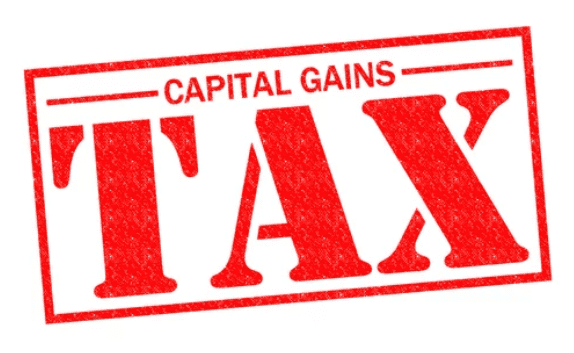Did you sell your stocks at a higher price than you paid for them? Congratulations, now that you have earned a profit on your investment, report it on your tax return because it is a taxable capital gain. Canadians pay a 50% tax on all of their capital gains. Because of this, the actual amount of extra tax you owe will vary according to your earnings and other income sources.
When you gain profit from the sale of investments such as stocks, bonds, debt, land, or buildings, you have made capital gains. So, here are a few pointers about taxes on stock gains Canada.
How Do Taxes on Stock Gains Canada Work?
The amount of taxes you owe highly depends on whether you’re a day trader or an investor (see online brokerages). To prevent day traders and others from engaging in transactions with the goal in mind of realizing capital losses on stock, the Canada Revenue Agency (CRA) uses the superficial loss rule. The rule applies to the 30 days leading up to and following the day of the stock sale transaction.
The Day Trader
According to the CRA, day trading is making a living by buying and selling stocks, capital property, and other securities. It is a full-time job. The frequency with which you trade and the time you hold your equity positions are essential considerations when determining whether you are a day trader. As a day trader, the profits you make are a business income and taxed at your standard marginal rate.
Investor
When you buy and sell stocks on the stock market as an investment, CRA regards you as an investor and can deduct your profits or losses from your taxes as capital gains or losses (see best long-term stocks to buy). CRA taxes capital gains at 50% at your marginal tax rate in Canada.

What Is a Capital Gain?
CRA defines a capital gain as a change in the value of an investment. Examples include equities in a fund or ETFs over the initial investment. If the equity investment value increases, you must pay capital gains tax.
Capital gains are in two categories:
- Capital gains realized
- Capital gains unrealized
A stock or piece of real estate that sells at an above-market price is a “capital gain.”
When your securities grow but you haven’t traded them, you have an unrealized capital gain. However, you only have to pay taxes on the capital gains that you’ve made. To put it another way, an increase in value is only theoretical unless you “lock in the gain” by trading your stock.
What Is a Capital Loss?
If the stock or real estate holdings value decreases, it is a capital loss. It is a capital loss when the value of an equity or asset drops below the amount of money originally invested in it. You can reduce your taxable income by deducting capital losses from your taxable capital gains. It is possible to carry capital losses either 3 years in the future or 3 years in the past.
Registered plans such as RRSPs, RPPs, and RESPs are tax-sheltered, so they are safe and you will not incur capital gains tax on them. It means that until you withdraw the funds, your equity can grow without worrying about the value fluctuating. If you’ve got non-registered investments, you will need to be aware of paying capital gains tax.

How To Avoid Capital Gains Tax on Stocks in Canada
A well-balanced investment portfolio and a good trading strategy are likely to be the best option for you to reap the benefits of a lower capital gains tax rate while protecting yourself from higher interest taxable income. Here are a few ideas to keep in mind.
Use the Tax-Exempt Accounts
Dividends, interest, and capital gains all receive preferential tax treatment. As a result, holding non-registered investments like equities, ETFs, and mutual funds makes good financial sense. Avoid paying taxes on high-taxed investments by keeping them in a tax-exempt account.
Harvesting Tax Losses
You can reduce your income tax return, you only have to offset capital gains with capital losses. Sending low-performing securities is a good idea to offset some of your Canada capital gains tax. That is why it’s called “tax–loss harvesting“.
There are several systems that automatically sell off your underperforming investments based on their performance. The CRA will crack down upon you if you sell a stock at a loss and then buy it back. Assets that the CRA considers “identical” have suffered a “superficial loss” of value.
For example, if an ETF loses money, you can’t just buy another one that does the same purpose in the next 30 days. You cannot sell your, let’s say, Canada Nickel stock and then repurchase it a week later.
Unless the CRA deems the transaction to be a ‘superficial loss’ you cannot use the loss to offset future gains.
You may put yourself at risk for future audits or increased scrutiny. With capital losses, you can defer capital gains from the prior three tax years and in the future get a lifetime capital gains exemption.
Donate Your Stock to Charity
An official tax receipt from the CRA allows you to deduct your donation from future taxable income when you donate to a legally recognized charitable organization. Instead of donating cash, you can give the registered charity your stock as a gift. Rather than selling the stock, you transfer ownership of it, making it an effective way to rebalance your portfolio.
To reflect the current fair market value, CRA will issue a tax receipt. To ensure that you understand your capital gains inclusion rate, seek the advice of a tax professional – see robo advisors.

Carry Forward Losses to the Following Year
Capital profits offset capital losses. With both gains and losses in a single tax year, it is vital to use capital losses to offset each other.
The exception to this rule is when you have only one capital loss or no gains from the previous three years that you can amend and offset. A tax professional may be essential to ensure that you take the proper steps to pay tax.
Are Dividends Capital Gains?
Investing in dividend-paying stocks means receiving a regular income stream throughout the year. CRA taxes capital gains the same way, but dividend stocks are not. Instead, it is at a lower rate.
The only investments in which you pay taxes are those you sell. Depending on the type of stock you own, a company may pay you a dividend (see the best stock to buy now in Canada and blue-chip stocks).

On the other hand, you can also own small-cap stocks or penny stocks, but the company’s profits determine the dividend amount. You receive them as a result of their transfer to you. They are, however, included in your income and subject to taxation.
You will avoid paying the steep capital gains tax, but CRA will tax your income at a lower rate.
How to Calculate Capital Gain Tax
First, you will need to figure out the adjusted cost base, which will help you know your capital gains. Starting with the adjusted cost base, you can analyze whether your investments have paid off.
There may be no need for you to calculate your capital gains and adjust costs based on your own, as most financial institutions do this for you. Starting with the adjusted cost base is the first step when figuring out how much money you will have to pay in taxes on your capital gains.
Book value plus acquisition charges, such as fees and commissions, when added together you arrive at the adjusted cost base (ACB).
Calculating the taxable amount is as simple as dividing the ACB by the total number of shares outstanding.
Capital gain subject to taxation equals the difference between the selling price and the ACB. If you sell your asset for less than what you paid for, you’ll owe taxes on the difference.
It is possible to have different ACBs if you buy other shares in the same fund at different times.

How Do Capital Gains, Interest, and Dividends Taxes Compare?
Distribution Type
Tax
Capital Gains
Discover when you sell a stock at a higher price than the market value.
The Adjusted Cost Base (amount you paid, plus any additional costs you incurred).
50% of capital gain.
Dividend income in Canada
Payments made by public corporations in Canada to shareholders.
Preferential tax treatment for dividend tax credits that are either eligible or non-eligible.
Interest
Bonds, T-bills, GICs, and other investments yielded interest.
Equal to ordinary income in terms of taxes.
What Are the “Superficial Loss” Rules?
People who avoid capital gains taxes by selling an asset and then re-buying it are subjected to “superficial loss” rules. To be clear, the CRA created it to deal with anyone trying to cheat the system. The rule states that you cannot claim a capital loss if you sell and buy the same equity within 30 days.
The Bottom Line
One of the essential skills in investing is knowing the tax consequences of every move you make. It will help you save money on taxes while also allowing you to get the most out of your investments. Remember, unless you qualify for the primary residence tax exemption, all Canadian residents must pay Canadian capital gains tax on their profits.